All products featured are independently chosen by us. However, SoundGuys may receive a commission on orders placed through its retail links. See our ethics statement.
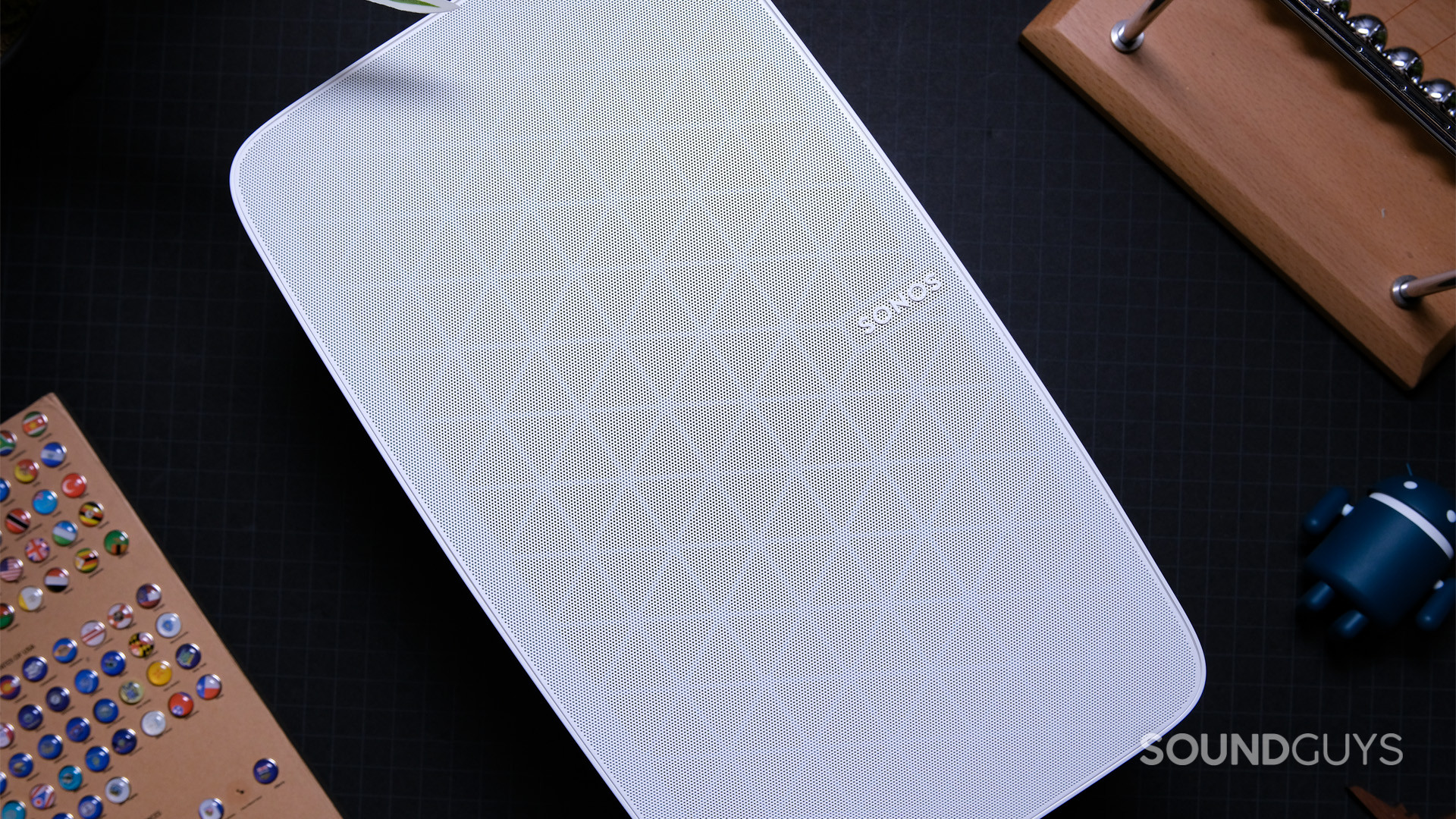
Sonos Five review
June 14, 2022
Sonos Five
You can mix and match smart speakers, but when it comes to cohesive ecosystems, Sonos has a reputation few can match. The Sonos Five aims to fit into that world, but also offers features to make it stand on its own. With a line-in port and Wi-Fi connectivity, this bulky speaker seems to straddle two worlds.
Does this speaker make itself at home or does it not quite fit in? We spent a week with the Sonos Five to find out if it makes an impact equal to its size.
- People who already have a Sonos ecosystem will find that the Five makes a nice addition to a bookshelf setup or record player.
- Music enthusiasts who find the drawbacks of Bluetooth too limiting will like the Wi-Fi, Ethernet, and line-in options of the Sonos Five.
- Completionists who want a full suite of Sonos products.
What’s it like to use the Sonos Five?
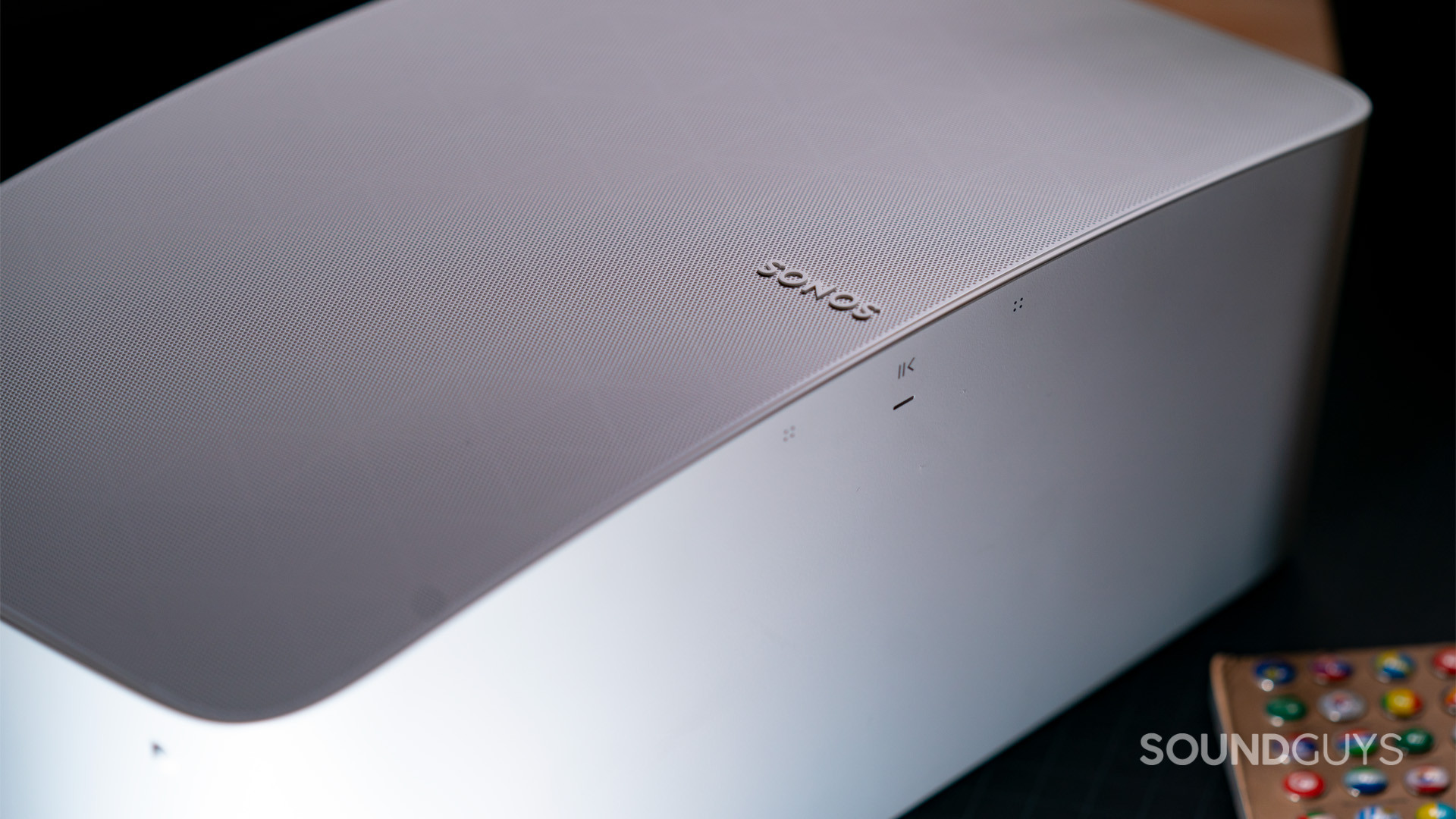
The Sonos Five is big, and that’s apparent immediately when you pick up the box. Coming in at around 6.36kg, it’s heavy too. A portable speaker this is not—it even requires AC power at all times. Similar to the Sonos One (Gen 2), you’ll have to find a spot where you want this to sit near an outlet and then keep it there. The Five is humidity-resistant, according to Sonos, but not water- or weatherproof in any way. As a result, it can’t stay on a balcony or patio.
The top of the Sonos Five has volume up and down buttons plus a play/pause button. Around back, you’ll find the power/join button along with the Ethernet and line-in ports. This configuration seems to line up with Sonos’ vision for the speaker—you put it down, hook everything up, and leave it be. Setting up the Five requires the Sonos app and a mobile device, but unlike the Sonos Roam, this time I haven’t run into any annoying setup hiccups.
You can place the Five horizontally or on either of its narrow ends. For optimal single-speaker playback, Sonos recommends a horizontal placement. There’s not much else to say about the speaker physically. Unlike portable speakers, you likely won’t be toting around the Five or subjecting it to much wear and tear.
Setting up the Sonos Five for the first time should be pretty simple:
- Plug in the Sonos Five and turn it on.
- Download the Sonos app (iOS/Android).
- Open the app and wait for it to detect the Five.
- Follow the on-screen instructions to finish setting up the Five.
How do you control the Sonos Five?
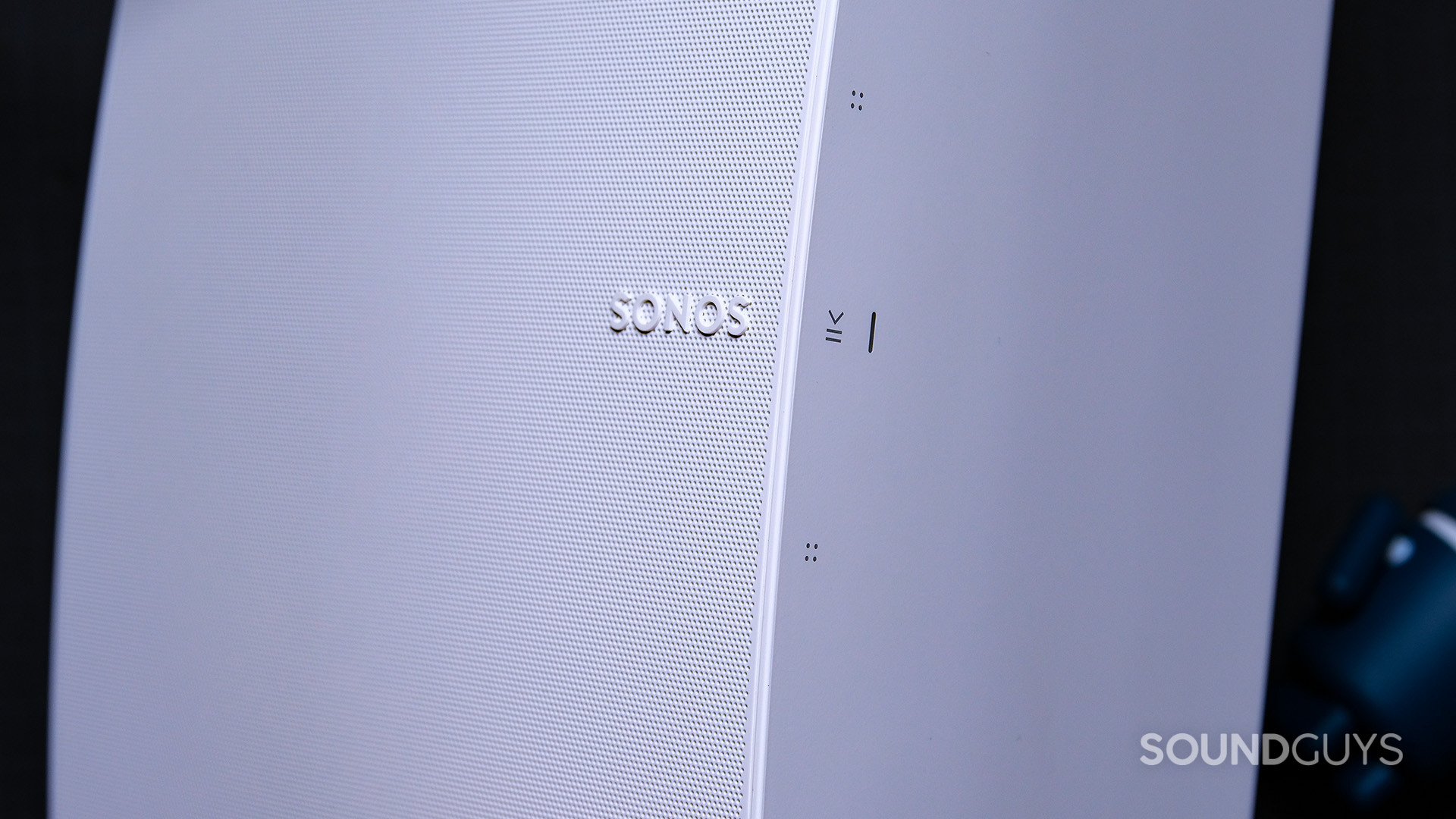
The buttons at the center of the front edge may seem pretty self-explanatory, but things aren’t exactly that simple. These are actually multifunction touch controls:
| Action | Result |
|---|---|
Swipe right | Skip to next song |
Swipe left | Go back to previous song |
Hold play/pause | Add audio from another room |
These controls are nice to have because there is no microphone to access smart functions (you’ll need another Sonos, Google, or Amazon smart speaker for that), and you don’t have to hunt down your phone to use them. However, you’ll have to use the Sonos app to do more with the Five.
Should you download the Sonos app?
You definitely need the Sonos app (iOS/Android) to set up the Five and get the most out of it. It’ll ask you for lots of personal information, but most apps do these days, unfortunately. The app is really where most of the exciting features lie and it works on iOS, Android, macOS, Windows, and Amazon Fire, so you can use it across a few different devices. However, the features available on these versions may differ with the mobile version being the most complete. Stereo pairing is available through the app as well, but you’re limited to pairing two Sonos Five speakers together. I’m unable to test this feature since we only have one device in our possession.
Once you have the app, you can explore Sonos Radio. This streaming service is included with purchase and it’s pretty fun to poke around. You can listen to playlists and radio stations from all sorts of genres and locations. There’s also basic equalizer included with the service, which lets you adjust the lows, mids, and highs, and enable loudness compensation. If you wish, you can upgrade to Sonos Radio HD, which provides 16-bit CD-quality sound at 44.1kHz. Furthermore, it unlocks the ability to skip tracks and find more content that’s unavailable in the free version.
The app is where you’ll download firmware updates and make changes to settings. It’s also how you select the line-in port as the source—the Five does not switch to it automatically by default if something gets plugged in (you can set it to do so, however). This has implications we’ll discuss later.
If you have a larger Sonos ecosystem setup, the app is where you can integrate the Five into it. You can specify what room the speaker is in, send sound to or remove playback from the speaker, and more. I couldn’t test most of these features with just one Five, however.
What Bluetooth codecs does the Sonos Five support?
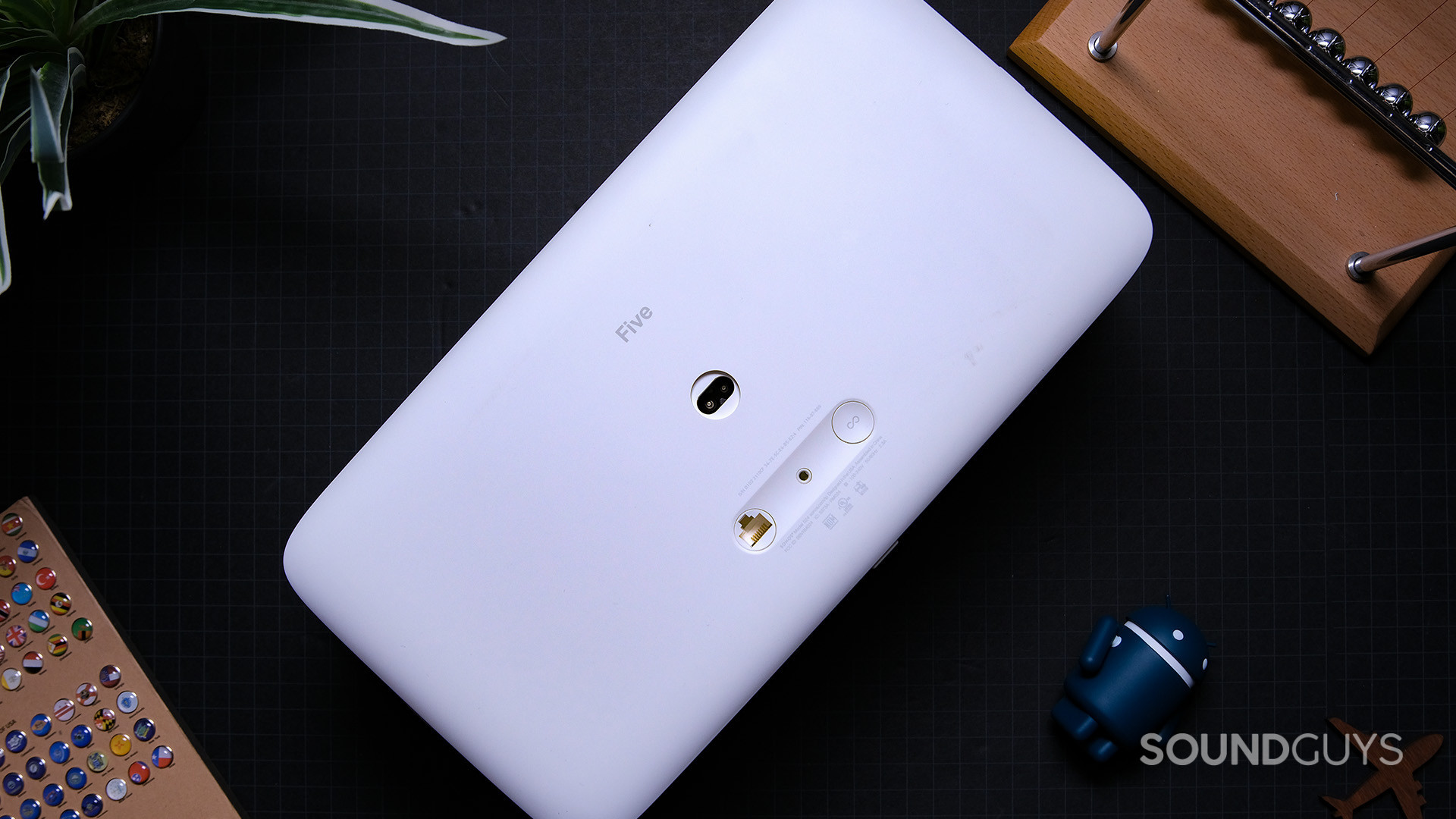
Wi-Fi, Ethernet, Apple AirPlay 2, and 3.5mm line-in are the only ways to get content to the Sonos Five. There is no support for Bluetooth audio playback. That might be a boon if you are the type of person that finds Bluetooth requires you to make too many tradeoffs. The Sonos app lets you play both local and streaming content, but only sounds coming through the app will play through the speaker. Content that plays via your phone’s YouTube app, for example, will not play through the Five.
The line-in port does not merely pipe audio to the Five, however. You must select it as the source inside the Sonos app, and there’s a noticeable amount of audio-visual lag when connected this way. According to Sonos, that’s because the line-in port actually converts the analog input to digital and then back to analog. This is likely so you can adjust line-in playback settings using the app and because the audio might be compressed depending on your network’s performance. That means the Five does not make for a good TV speaker or entertainment center option. The delay will make programs unwatchable and video gaming is a non-starter. Still, for playing CDs, vinyl records, or podcasts, it’s a handy option.
Yes, you can ensure the line-in port is always uncompressed, but be aware this might cause your network to experience difficulties, especially if you have lots of Sonos products or a slow connection. To disable audio compression on the line-in port enter the Sonos app on Android or iOS:
- In the app, select the Settings option and then tap System.
- Tap Audio Compression.
- Select “Uncompressed.”
Does the Sonos Five have a battery?
The Sonos Five requires AC power at all times. There is no battery. Sonos includes a power cord and it’s around 2m long, but if you want the speaker to sit any farther away from an outlet, you’ll have to find an extension cord.
How does the Sonos Five sound?

The Sonos Five can do bass better than many small home speakers. However, as big as it is, it’s outfitted with three tweeters and three mid-woofers, but nothing larger. Overall, the Sonos Five sounds good, and if you have a large library of FLAC files, the Wi-Fi playback will make them shine, as will the line-in port.
Lows, mids, and highs
Being this large does give the Sonos Five a leg up when it comes to bass response. Because you’ll likely end up with the Five placed near a wall on a flat, hard surface (because of its need for AC power), this arrangement also helps create the kind of bass response most consumers have come to expect. For example, Dog Days Are Over by Florence and the Machine has loud, forceful drumming sections that the Five reproduces well. Songs like this also demonstrate the speaker’s ability to reproduce the sounds of multiple instruments in tandem with tambourines and harps still audible while Florence’s lyrics remain amply intelligible.
Sometimes large speakers can actually overemphasize bass, but thankfully that does not appear to be the case for the Five. As a result, classical and other kinds of music still sound good. The five reproduces the strings at the opening of Yeh Jo Halka Halka Suroor Hai by Ustad Nusrat Fateh Ali Khan with sufficient loudness compared to the harmonium, tabla playing, and Khan’s singing so that everything remains distinguishable.
Like any speaker, where you place the Sonos Five can affect how it will sound. Furniture, room layout, and materials can change the way the speaker performs. Sonos recommends you keep at least around 5cm free from obstacles at the back and sides of the Five. Sonos claims the Five has Trueplay to tune the speaker to your environment, but that requires a compatible iOS device and I can’t test this.
Hold up! Something’s missing:
This section is typically where we display a frequency response chart to show you exactly where the audio output shines and where its deficiencies lie but it’s going to take a bit. We are creating a new test sequence to remove the two-second delay that the line input introduced from the analysis in order to provide an accurate frequency response chart for readers. We will update this review once we’re able with improved sound quality measurements and performance plots. These will be made obvious by a new chart aesthetic.
Thank you for bearing with us, and we hope to see you again once we’ve sorted everything out.
The Sonos Five is big and powerful, so it definitely gets loud. It could easily add energy to an indoor party, and if you stereo pair it to another one, you’d even amp up a rave or EDM fest at your place.
Can the Sonos Five be used for phone calls?
Unlike the Sonos Roam, there is no mic on the Five that can be used for phone calls. That also means you can’t use voice controls if it’s your only Sonos speaker available. Instead, a compatible device and the Sonos app do most of the listening required.
Should you buy the Sonos Five?
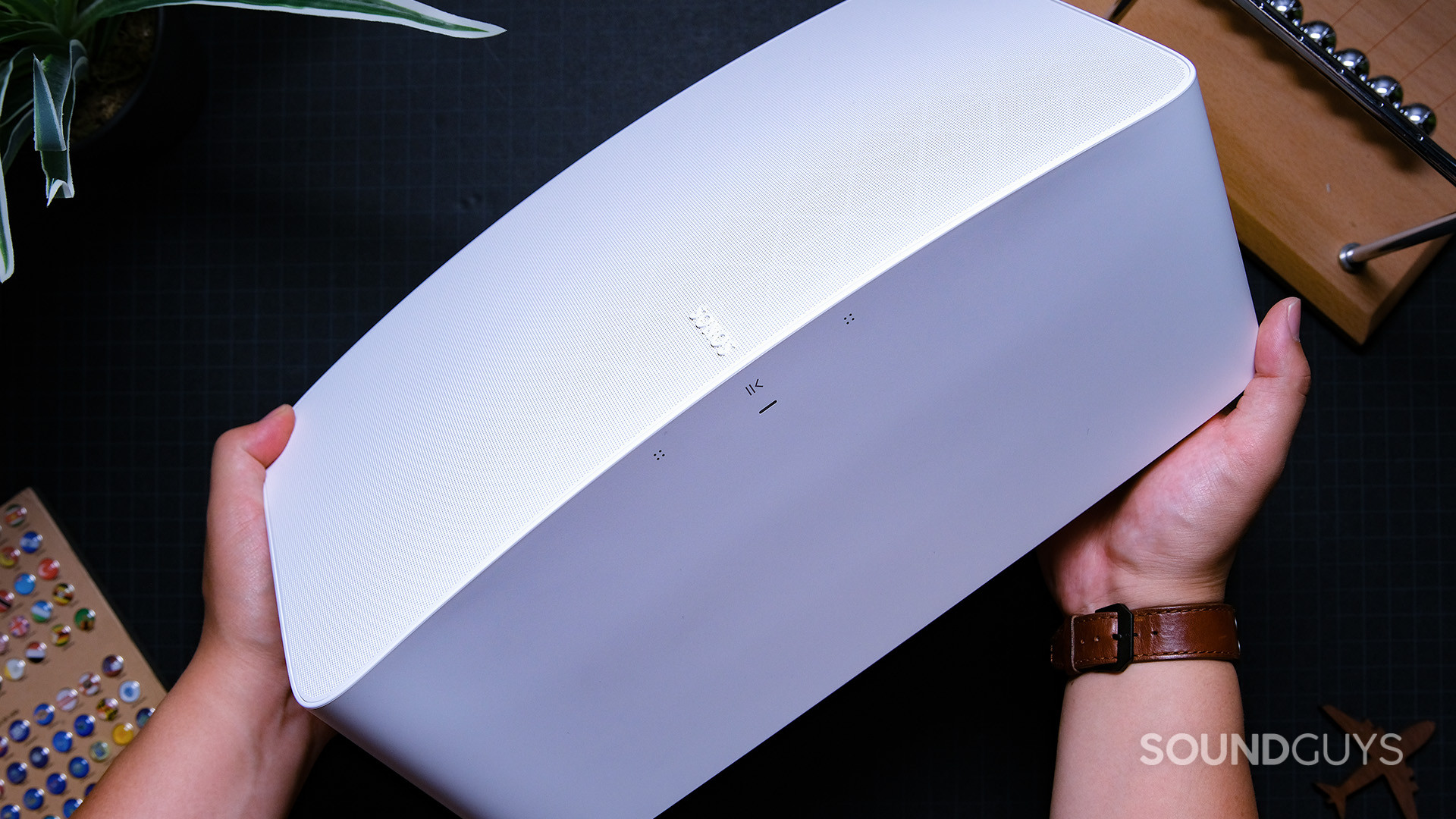
If you already have a Sonos ecosystem installed, the Five could make a good addition: it’s big, loud, and sounds good. That’s especially true if you want to hook up a record player or some other non-video device for playback through your Sonos setup. Audiophiles who want to steer clear of Bluetooth but still want something connected to modern-day smart home environments will appreciate the Wi-Fi and Ethernet connectivity of the Five. On that note, the 3.5mm jack is handy, but enthusiasts may want to disable any compression altogether. And if you’re a completionist who cannot be without every last piece of a collection, the Five makes sense in that regard too.

But if you just want a big and loud speaker that sounds good, there are cheaper options out there that don’t lock you into an ecosystem. The Five seems fit for people already hooked on Sonos, but if you’re on the fence, it likely won’t tip you over into the walled garden. Plus, you can’t use it for phone calls or even make voice commands without another Sonos product or a smart speaker from another compatible brand.
What should you get instead of the Sonos Five?
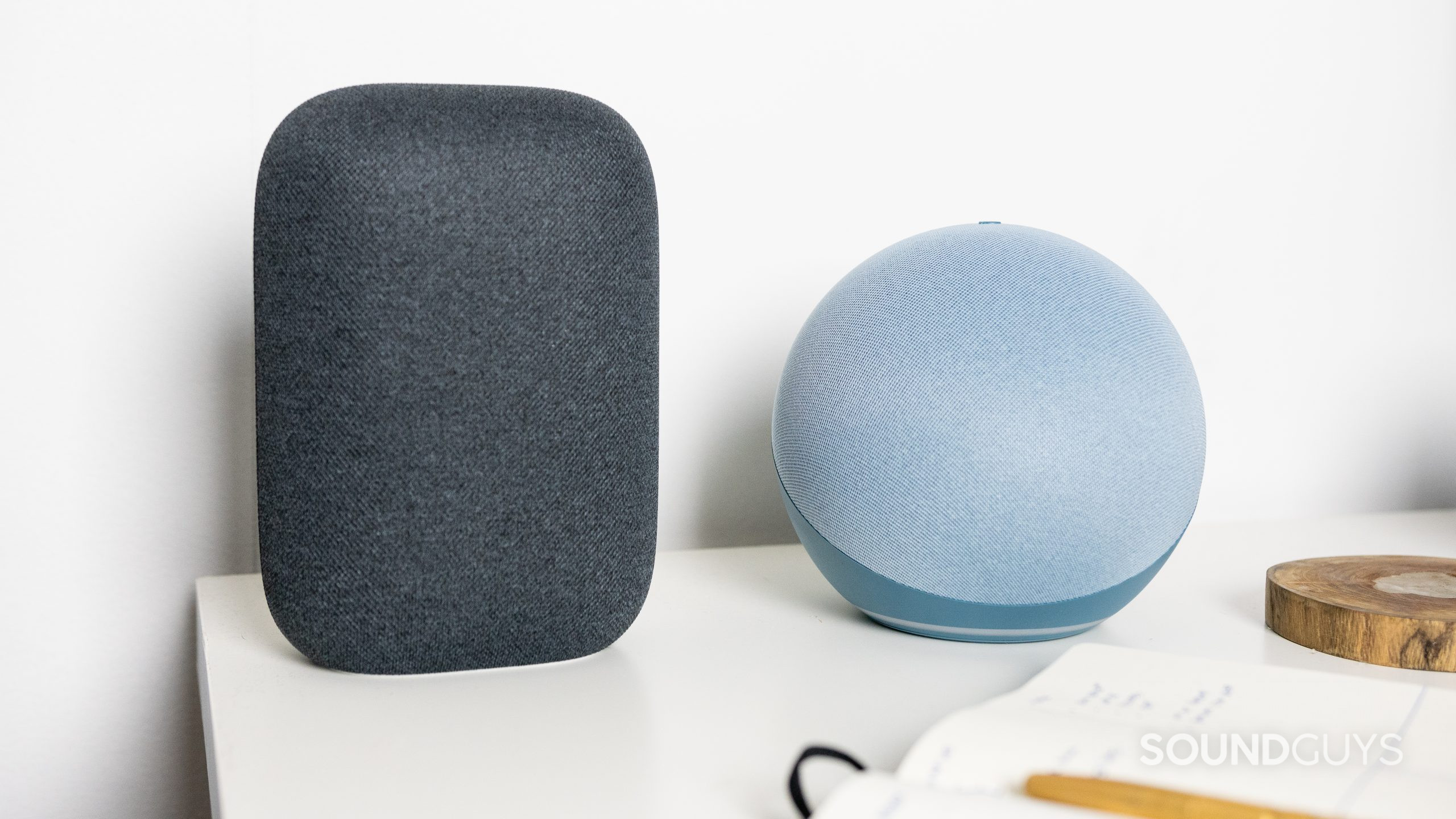
If you want a plug-in smart speaker that’s ready to use out of the box, you have a few options. The Google Nest Audio and Amazon Echo (4th Gen) include a microphone so you can start commanding your setup right away. Both also support Bluetooth, so any Bluetooth-enabled device can sync up with them and start playing content. You will have to decide which voice assistant you prefer and stick with it when you select a model, however. Similarly, if you want an ecosystem-exclusive smart speaker, there’s the Apple Home mini. Apple is another walled garden, but it’s a large one. All of these speakers are smaller than the Sonos Five, on the other hand, so don’t expect them to be as loud and bass-heavy.
Sonos itself makes the Move, which works better as a starter smart speaker and introduction to the Sonos ecosystem. It’s even IP57 rated and “portable” (it’s more like luggable). It does not offer an aux jack, however.
What if you want a more portable speaker?
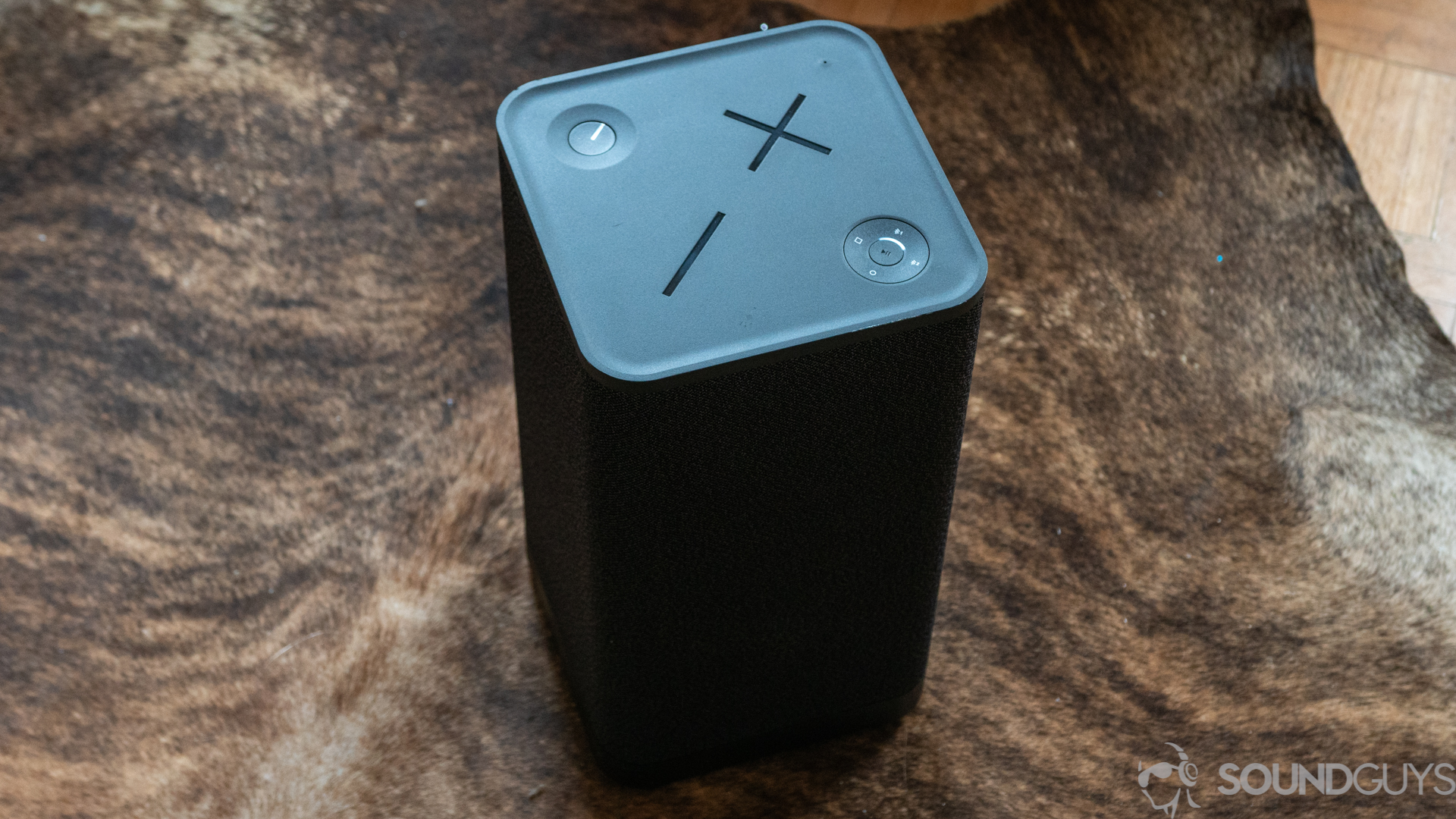
Big, bass-friendly speakers with both wired and wireless connectivity are many in design and performance. The JBL Xtreme 3 is large and loud, plus it can charge other devices with its USB ports. It doesn’t have Wi-Fi connectivity or higher-quality Bluetooth codecs, but you can use the aux port to circumvent that—plus its line-in port works without any need to select it from an app. Its IP67 rating means it’s perfectly at home outdoors or by a pool, too.
Party monsters might prefer the UE HYPERBOOM, which gets plenty loud and has an IPX4 rating to prevent an accidental beer splash from totally ruining the fun. It even boasts an optical audio port in addition to an aux jack plus dual Bluetooth input functionality. It doesn’t have high-quality Bluetooth codecs, either, but again you get wired connectivity. Its sound isn’t as clear as a soundbar or anything, but that’s not vital for parties.
Frequently asked questions about the Sonos Five?
No, you can use the Sonos Five on its own, but you won’t get the full smart speaker experience that way.
An aux port is latency-free if it’s just piping an input directly to the speaker’s amplifiers. But Sonos tells us that the Five converts the analog aux input to digital first. This is likely done so that signal processing can be applied, and so you can control the aux input using the Sonos app, but it also might compress the audio, too (depending on your network). That means a conversion back to analog also has to happen before the audio makes it to your ears, and these steps all introduce latency.
No, the Sonos Five only has a line-in port. You will have to use a turntable that already has a built-in pre-amp or pipe the audio to an external pre-amp before sending it to the Five.